.jpg)
Hyundai Ioniq 5 Review
.jpg)
Introduction
Hyundai has been heading toward electrification for a while now, with various hybrids on offer throughout its range, throwing in an electric motor or two to complement the petrol and diesel engines under the bonnet.
But the Ioniq 5 five-door crossover is the first car to be built on its new E-GMP (Electric Global Modular Platform). So you'll find no combustion engines here.
Select's rating score* - 4.3 / 5
At a Glance
The first thing that grabs your attention about the Ioniq 5 is how distinctive it looks. Some electric cars look like they're a different breed, and the Hyundai is no exception. Although it looks compact in the pictures, the car is noticeably bigger than it appears – and this might surprise you when you see one in the metal. Believe it or not, the Ioniq 5 sits between the Tucson and the Santa Fe, although you’d swear the former was much larger.
The reason for the optical illusion is that the Ioniq 5 sits lower to the ground, so it is shorter. But it really is a relatively big car.
In terms of looks, it appears as a cross between an Audi Q3 and the new Vauxhall Mokka.
With no front grille, there’s a thin shiny black strip that runs between the mean-looking headlights. These are laid out in pixel LEDs, producing a square pattern when they light up and a contrasting strip beneath it. This appears to give the car a moustache.
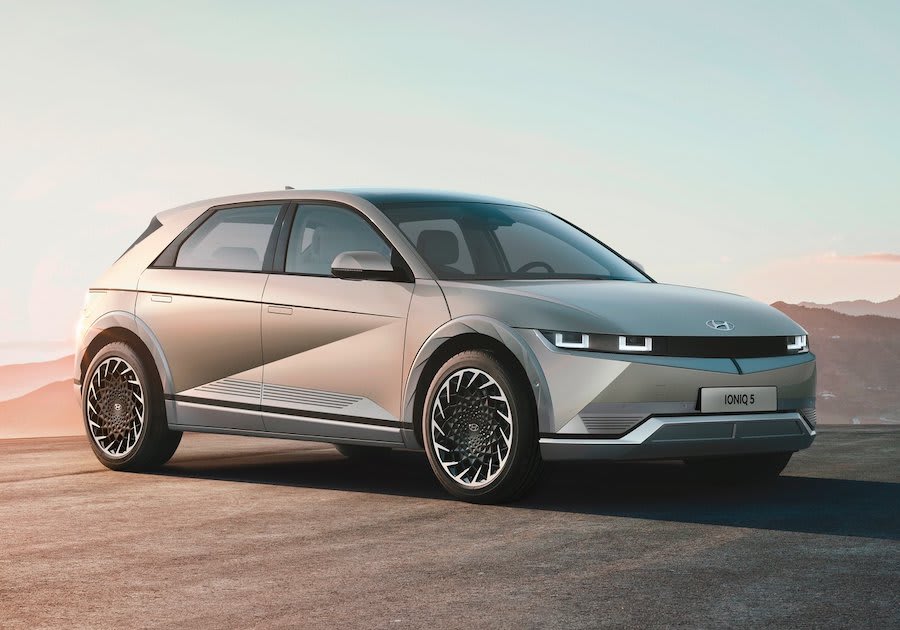
Head-on, the Hyundai seems quite boxy with its vertical edges. And down the sides, it has a diagonal line, making the lower part of the car stick out to add a tinge of sportiness.
There's a similar design at the back, with more pixel LEDs above a contrasting strip and a silver-coloured rear bumper.
What's ironic about such a futuristic-looking car is that it has its roots in the 1970s. The Hyundai’s aesthetics are based on a concept car called the 45, which, in turn, was based on another concept model – the 47-year-old Pony coupe (not to be confused with the Pony the automaker took into production, which was terrible).
Key Features
There are three trims on offer – and a trio of powertrains.
The entry-level SE Connect includes 19-inch alloys, rear parking sensors, a rear-view camera, and the LED headlights.
Next up is Premium, which adds in dual LED headlights, a powered tailgate, and a chrome trim on the exterior.
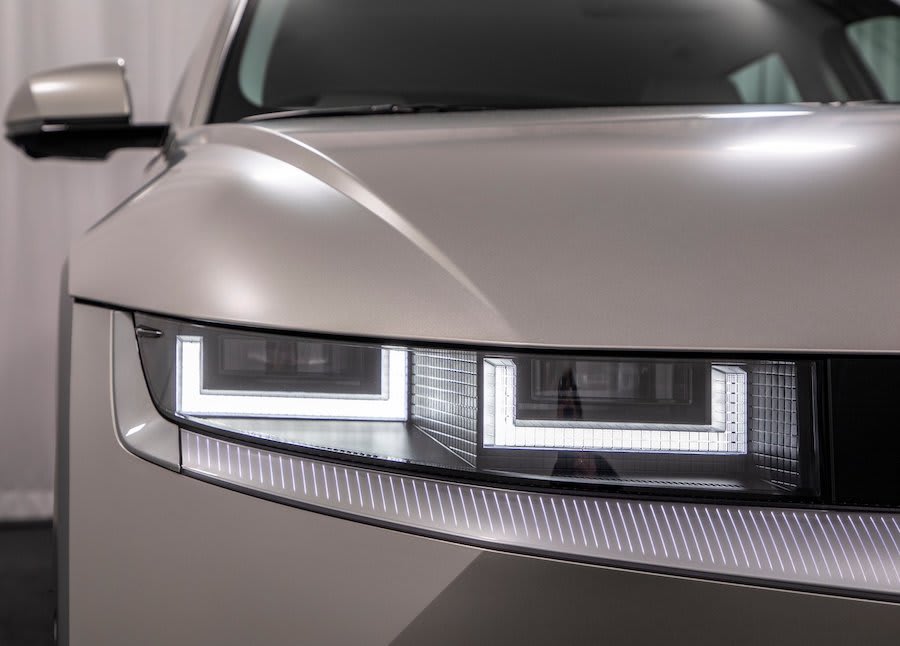
The top-of-the-range Ultimate grade includes heated 20-inch wheels and leather seats, which are electric in the front. You also get a Bose speaker system and a sliding centre console, plus a head-up display. The three powertrain options start with a 58kWh battery and an electric motor producing 170PS. This is the only one available with the SE Connect trim.
Next up is the same motor with a bigger 73kWh battery, producing 217PS. Both the 170PS and 217PS powertrains drive the rear wheels. But, in the top-of-the-range powertrain, although you also get a 73kWh battery, it comes with two electric motors. These provide four-wheel drive and up the power to 305PS.
You can choose from any of the powertrain options if you pick the Premium or Ultimate trims. There are nine colours to choose from – pale grey, dark grey, black, pearl blue, teal green, olive green, matte grey, matte gold and solid white. The interior colour is black, although, in Ultimate trim, you also get the option for a mixture of light and dark grey.
Range & Batteries
The entry-level 170PS motor with the 58kWh battery can do 238 miles, while the mid-range motor with the 73kWh battery is capable of 298 miles. Make sure you've got the practical information by consulting our guide to official v. real-world battery range.
With the same 73kWh battery running two motors on the flagship powertrain, the range is reduced, but only slightly to 287 miles.
This is in the same ballpark as the Ford Mustang Mach-E, which manages between 248 and 379 miles, while the Volkswagen ID.4 claims 310 to 323 miles.
The Tesla Model 3, meanwhile, achieves between 278 and 360 miles, depending on spec.
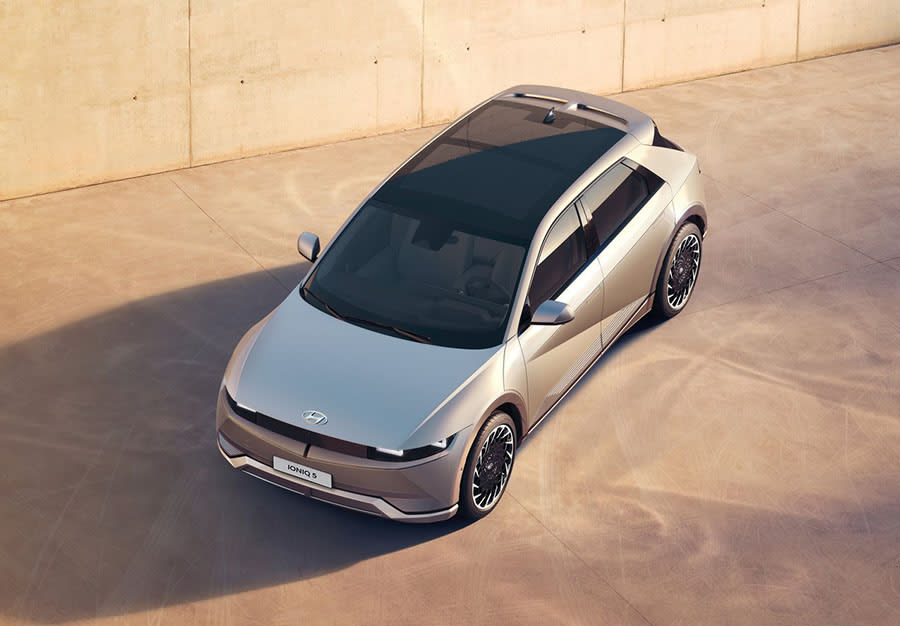
The batteries are beneath the floor of the cabin in the Ioniq 5. What's more, you can harness the battery power of the car for any purpose. So, if you have an adapter, the correct extension lead, and you have a power cut at home, it could theoretically be used as a backup power supply for your TV.
We’re pretty sure Hyundai probably had ‘the ability to charge another Ioniq 5’ in mind rather than ‘watch your TV in a power cut’ - but you get the idea.
Performance & Drive
We’ve tested the top of the range powertrain and can report that it’s rapid. Zero to 62mph is dealt with in just 5.2-seconds, meaning it's faster off the line than a Volkswagen Golf GTi Clubsport. So this really is in hot-hatch territory.
The figure drops in the lower-spec powertrains, with the mid-range motor getting you to 62mph in 7.4-seconds, while it’s 8.5-seconds with the entry-level motor, which still isn’t bad.
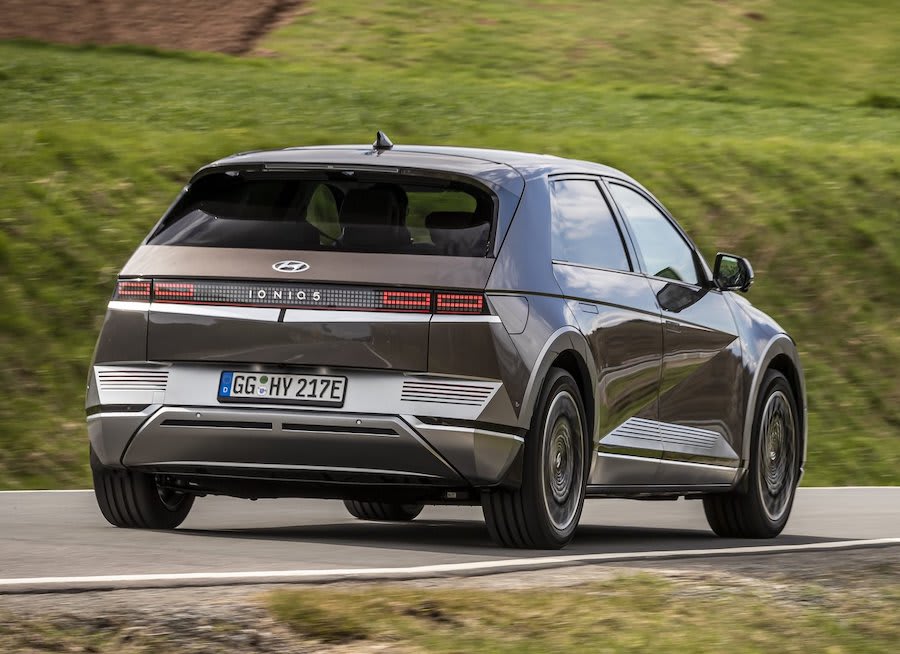
The 20-inch wheels fitted to our Ultimate trimmed Ioniq 5 make for a firm ride in terms of ride comfort. The comfortable seats compensate for this, but it's clear the car has been set up with handling in mind.
The stability is helped by the batteries being low down, which keeps the centre of gravity low, too. Despite the weight that the batteries add, the vehicle doesn't feel heavy, and it’s agile enough when pushed around corners. There is a bit of body roll if you take a corner fast but, while it isn’t sporty as such, it’s enjoyable to drive.
It might not suit those who like to drive a memory foam mattress with wheels – and the Mustang Mach-E is arguably more fun still – but the Ioniq 5 is a happy medium between the two.
Despite the pleasurable drive, the Hyundai can still cruise without any fuss. Furthermore, even allowing for the lack of an engine note, the cabin is well soundproofed, limiting road and wind noise.
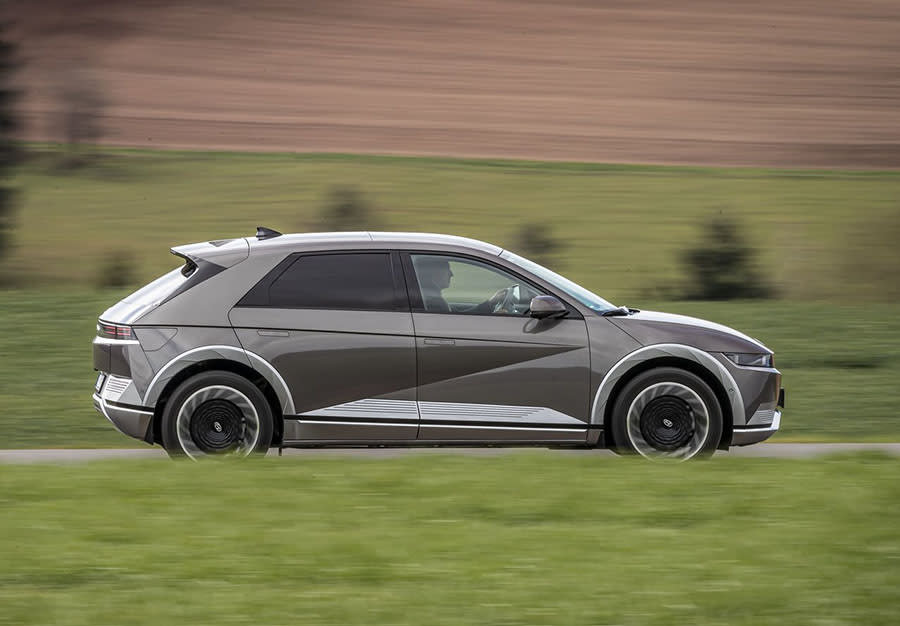
There are three driving modes to select, and, unlike in some electric vehicles, you can tell the difference between them. Eco dumbs the car down as much as possible, conserving the battery. While at the other end of the scale, Sport increases the throttle response and prioritises performance. Normal is a halfway house between the two. In all driving modes, though – even Eco – it still feels full of beans.
The extent of the regenerative braking force can be adjusted via the paddles behind the steering wheel. And you can use the i-Pedal, which is essentially the Ioniq 5's one-pedal driving mode. When you lift off the accelerator, the car will automatically decelerate, coming to a complete stop, sticking some charge back into the batteries as you do so.
Charging
The Ioniq 5’s party piece is that it includes incredibly quick charging.
It uses Ultra Rapid charging. Most electric cars on sale today use Rapid or Fast charging (yes, there are official names), so the Hyundai is in a bit of an exclusive club.
Sadly, the downside is that exclusive clubs tend to be, well, exclusive. There are hardly any Ultra Rapid charging points currently in the UK. But, as the infrastructure improves, the numbers will shoot up.
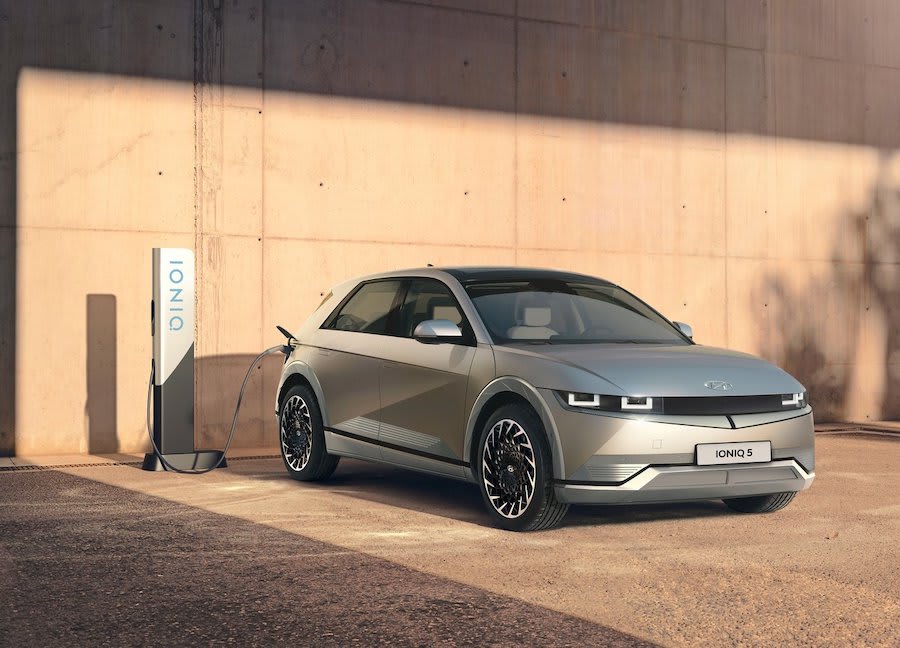
The good news is that you can charge the car up at slower outlets, too. So, you won’t need to use all the battery while driving a 150-mile trip back from the nearest Ultra Rapid charger. Phew, there could have been an ‘infinity loop’ there.
If you are lucky enough to find an Ultra Rapid charger, then you can go from 10% to 80% charge in just eight minutes. That’s half the time of even the Ioniq 5’s fastest rivals in the charging stakes.
Charging at home will take around 12 hours, so make sure you get the most out of every charge by consulting our guide on picking your ideal electric car charger.
Running Costs & Emissions
Running costs might actually be higher for some owners if you have an Ioniq 5. This is because using the Ultra Rapid charging points tend to command a higher premium.
That said, because there are so few of them, most owners won’t be using them yet. Nevertheless, the cost of recharging can vary significantly from location to location anyway, so it’s worth bearing this in mind.
There are no CO2 emissions to worry about, obviously.
And just for info, Hyundai is among the best when it comes to warranties.
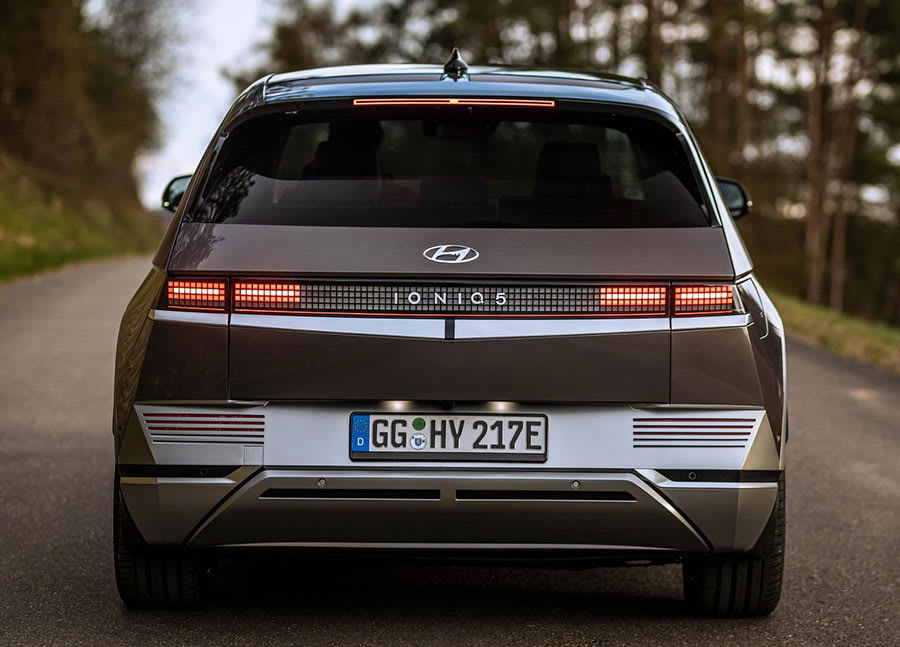
It laughs in the face of manufacturers who only offer a three-year, 60,000-mile guarantee. Hyundai’s last five years and come with unlimited mileage. That also includes half a decade's worth of roadside assistance and annual health checks.
What’s more, the battery is covered by an eight-year warranty, although this is only valid up to 160,000 kilometres (just under 100,000 miles).
Interior & Technology
Stepping inside the Ioniq 5 is like going forward in time.
It is ultra-futuristic, with two large 12.3-inch screens laid out next to each other. It looks like two tablets in a cradle, which provide the digital instrument display and the infotainment system, which is clear and straightforward to use.
The latter comes with SatNav, while Apple CarPlay and Android Auto are included as standard.
There aren’t many physical buttons on display, with most of the car’s settings adjusted via the infotainment system. However, there are touch-sensitive buttons for the air conditioning and climate control. These aren’t particularly intuitive to use, especially while driving, as you can’t get a feel for where they are. But the lack of buttons means there’s less to go wrong.
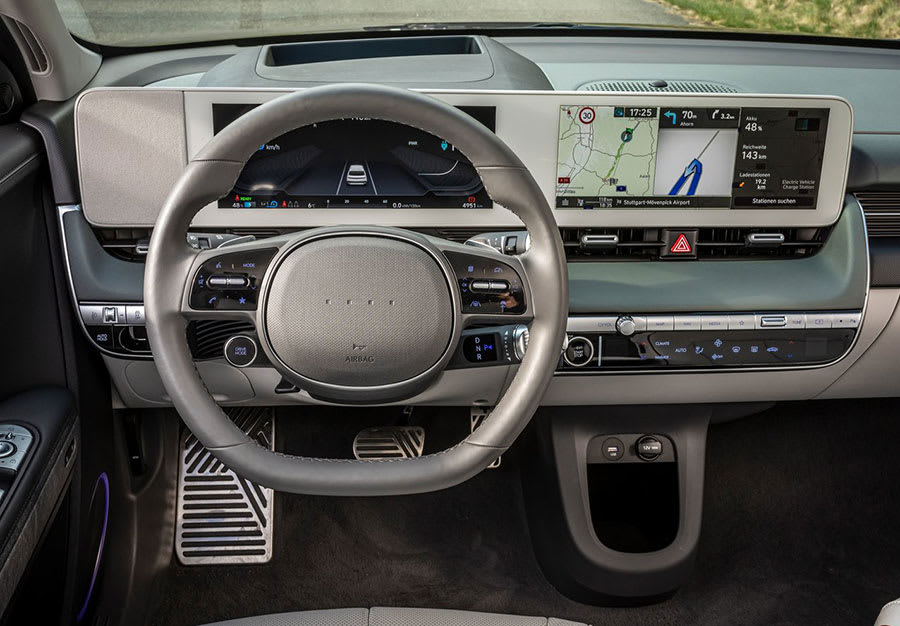
The icing on the cake, though, is the Augmented Reality (AR) system on the Ultimate trim. If you're unfamiliar with AR, it's the concept of overlaying virtual information onto the real world. So, for example, if you point your smartphone camera at the sky when using a particular app, the phone might well point out the flight numbers of all the aircraft flying overhead on your screen.
Hyundai's take on AR is that, using a heads-up display, it will flash directions at you by overlaying them on the windscreen. So, as you drive along, it's literally adding virtual arrows to what you see through the glass, so you know where to turn and what speed to be travelling at. We think this feature will be popular.
As for the rest of the interior, because of the lack of buttons and the next century feel, minimalism is very much the order of the day. But this makes the cabin look very uncluttered, tidy, and spacious.
Hyundai needed to pull no tricks to make it look roomy, though – because it is. There is a lot of space and, although the Ioniq 5 is a larger car than it seems, like the Tardis, it appears to be even bigger on the inside.
The only thing that lets the model down is the use of cheap plastics. Even the soft-touch materials feel a little too artificial in places, but it looks fantastic all the same.

The all-black colours are a little bit samey. Mind you; the Ultimate trim gives you the option of a two-tone contrasting grey, which is what we have in our test car. It livens things up, but if you’re regularly picking the kids up from football practice, you might be grateful for the darker colours. Even so, there are some features to break up the colour scheme, including the tips of the indicator stalks, which have a brushed aluminium effect (although they are actually plastic).
In the back, there is also a lot of space. Very tall people may struggle for headroom; but, if that’s the case, the rear seats can be moved back, meaning you can adjust the position of your legs accordingly. Aided by the extra space because of the flat floor, there’s more room to find a comfortable seating position. As a result, you should be able to sit a bit lower in the seats to keep your head off the roof. But all this will be a non-issue unless you're well over six feet tall.
Practicality & Boot Space
The Ioniq 5 is a hatchback, so although the boot floor is on the high side, the boot opens out wide, making it very accessible.
It comes with a massive 540-litre capacity. That’s bigger than a Tesla Model 3, which only has 425-litres, the Ford Mustang Mach-E at 502-litres – and is only seven litres less than the big daddy of the Hyundai range, the Santa Fe.
The boot capacity expands to 1587-litres with the rear seats put away, which fold down in a 60/40 configuration.
Thanks to the lack of engine underneath the bonnet, there’s a little bit of storage space there for smaller items, too.
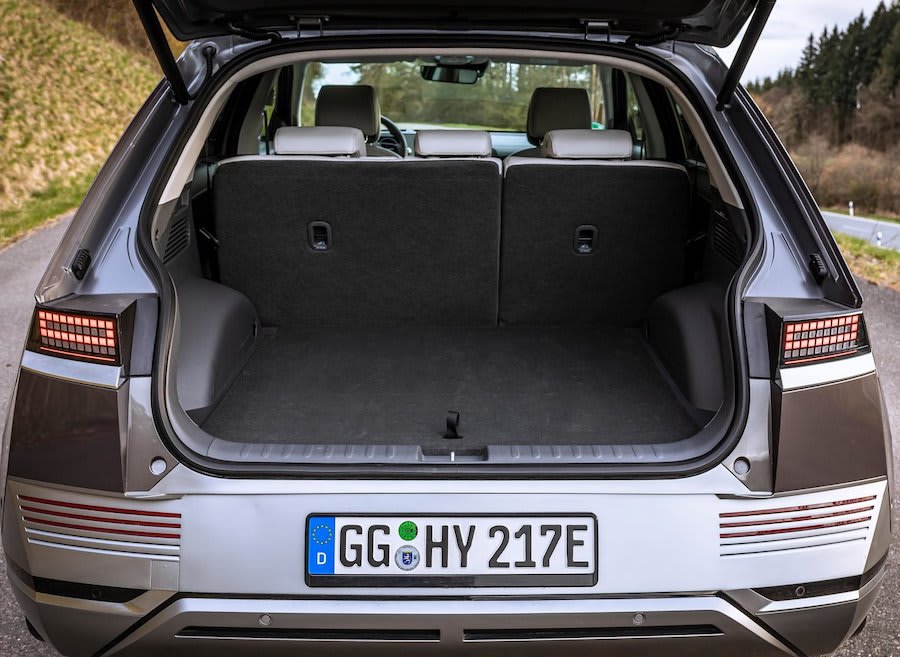
Safety
Euro NCAP hasn’t tested an Ioniq 5 yet, so this is something of an unknown.
Hyundais are, historically, very safe cars, with most scoring five-star safety ratings. That said, the most recently tested vehicle, the i10, only came with a three-star rating. It’s a supermini, though, and smaller cars often don’t do as well because there’s less car to absorb an impact.
A Tucson or a Santa Fe are likely to be more reliable benchmarks. The models scored 86% and 94% respectively for driver safety, 85% and 88% for children, as well as 71% and 76% for safety assists.
In terms of safety systems, Highway Drive Assist provides adaptive cruise control to keep you at a constant speed. But the system will adjust itself to maintain the gap to the car in front while also ensuring the vehicle stays centred in its lane.
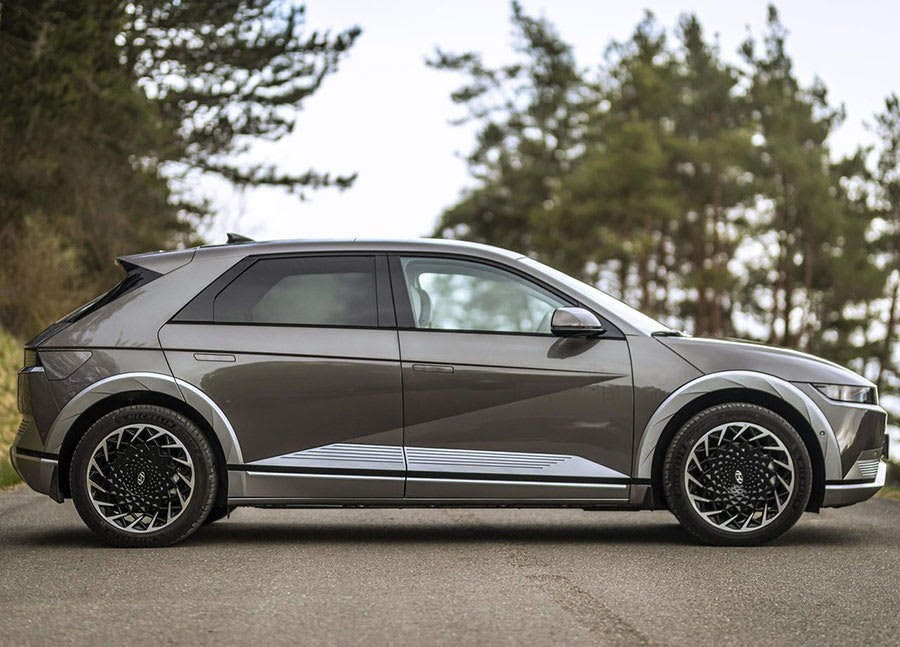
It also has forward collision avoidance, and intelligent speed limit assist. And, if the unthinkable should happen, the technology will automatically call the emergency services if the vehicle is involved in an accident.
The Premium and Ultimate trims also add blind-spot monitoring.
And the pièce de resistance: the vehicle can self-park.
Options
As you can see, Hyundai packs so much into the standard car that we weren't all that surprised to find the options list was utterly bare.
Nothing. Nil. Nada.
The only way to get more is to upgrade to a higher spec trim. So, if you have the Ultimate trim, you have everything Hyundai could throw at it.
It’s a shame, though. We suspect many will want the Augmented Reality heads-up display but won’t want to shell out top dollar for the top-of-the-range trim.
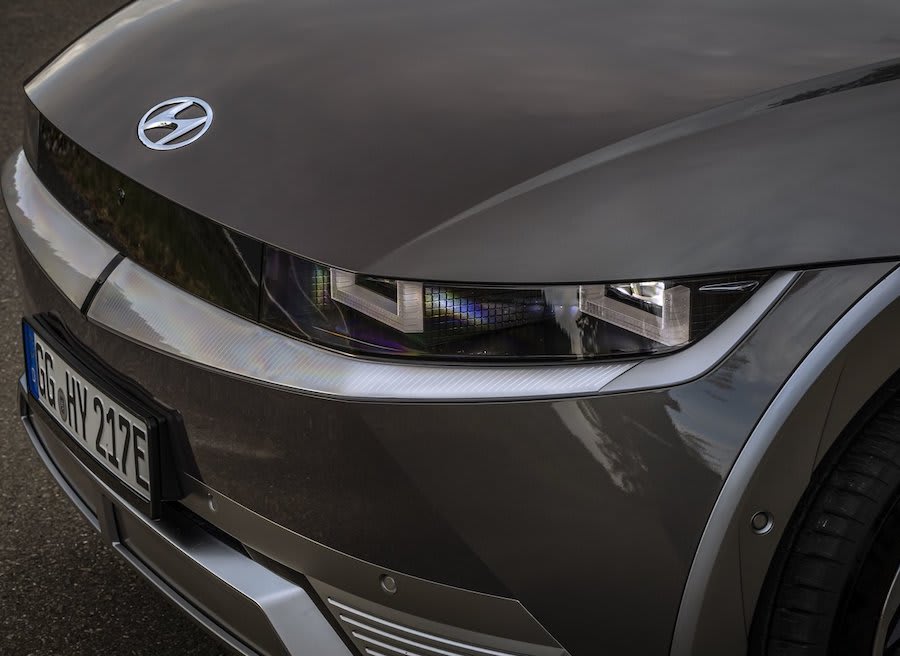
Rival Cars
In terms of alternatives, the Kia e-Niro is likely to be high up your list. It’s one of the best electric cars you can get – and far cheaper than its rivals, including the Ioniq 5.
Other must-see choices include the Volkswagen ID.4, the Tesla Model 3, and the Mustang Mach-E, while the Audi Q4 e-tron is also worth shortlisting.
Except for the e-Niro, the Ioniq 5 is cheaper than all of them.
Verdict & Next Steps
Well, there you have it – we’re blown away by the Hyundai Ioniq 5.
The South Korean manufacturer has been getting better and better over the years, and this latest offering brings the firm right into the mix with the best of them.
Other than a slightly firm ride on the massive 20-inch wheels of the Ultimate trim, it’s difficult to fault any aspect of it.
The car is futuristic, packed full of tech, goes like a hot-hatch and is fun to drive. It’s also lovely to sit in; it’s spacious, practical, distinctive, environmentally friendly, superbly economical, and well-priced for its class. Additionally, it’s one of the fastest charging electric vehicles on the market.
What more could you possibly want?
Where to next?
View latest Hyundai Ioniq 5 leasing deals - guide price from £484.65 per month inc VAT**
Looking for a great deal? Check out our incredible range of car lease deals
New electric car? Read our latest Reviews and find the right model for you
Want to know more about leasing? Take a look at our comprehensive Leasing Guides
Interested in everything motoring? Why not catch up on all the latest Car Leasing News.
*Score based on Select’s unique meta score analysis, taking into account the UK’s top five leading independent car website reviews of the Hyundai Ioniq 5
**Correct as of 19/04/2023. Based on 9 months initial payment, 5,000 miles over a 48 month lease. Initial payment equivalent to 9 monthly payments or £4,361.85 Ts and Cs apply. Credit is subject to status.




















